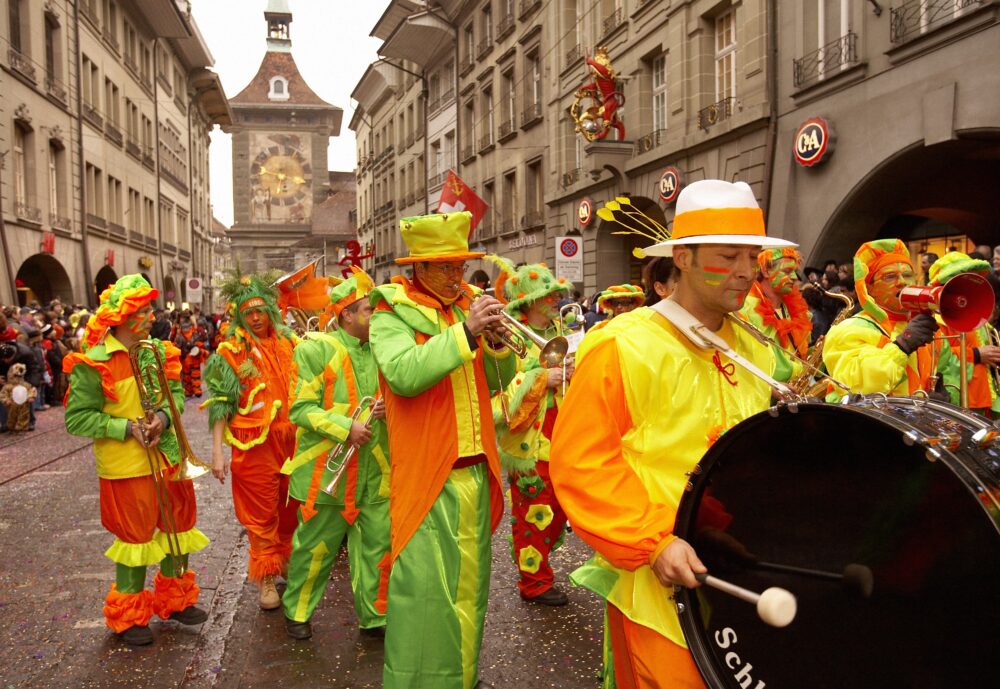Bern’s iconic Carnival is 40 years strong
It’s a cold winter’s night, and you’re alone in a dark medieval alleyway in Bern’s Old City. Suddenly, you see the warm glow of torches in the distance — and a big hairy beast swinging its hips and clawed paws as it lurches across the cobblestones towards you.
“It’s a bear!” You gasp. Not out of fright—but out of delight!
The torchlight procession of Bern’s Carnival, Bärner Fasnacht, a hallmark of the Swabian-Alemannic festival, is coming your way. The sounds of drums and tambourines compel you to follow along with the Carnival’s mascot bear and eccentric revelers up Junkerngasse (Nobility Lane), over to Münsterplatz, a grand, historic plaza facing Bern’s magnificent, 15th-century cathedral and its 328-foot spire, for an award ceremony to honor the best costumes — from steampunk villains to outlandish clowns. Your mouth is agape.
The phantasmagorical night, on day two of the three-day carnival, concludes nearby with the Witches’ Carnival at the colorful 16th-century statue Gerechtigkeitsbrunnen (Lady Justice).
How lucky to be in Bern for this!
Bern’s Carnival — a three-day spree of pre-Lenten merriment with food, drink, and Guggenmusik bands — begins each year on the Thursday after Ash Wednesday, exactly 111 days after the city’s Carnival bear is locked up on November 11 at 11:11 am to hibernate in the prison tower. Ychüblete drumming awakens the bear and he is freed!
That said, the bear, the symbol of Switzerland’s capital because, according to legend, Count Berchtold V of Zahringia, who founded the city in 1160, named it after a large bear he had killed nearby, hasn’t always been associated with the carnival.
While Bern’s Carnival dates to the 16th century, its current iteration is only 40 years old. The original Carnival was banned for centuries after spurring a peasant revolt that created a rift between Bern’s Catholic and Protestant residents. During the ban, the Bernese traveled to Lucerne and Basel to celebrate fasnacht. Not until the 1970s did residents discuss the possibility of bringing it back. The relaunch finally happened in 1982 when three friends came together to raise sufficient funding and support.
The modern version, however, incorporated some of the city’s symbolism and history — such as the bear—to distinguish it from other fasnachts. Carnival lore links the beast and its liberation to a pre-1917 visit by Russian revolutionary Vladimir Lenin, who came across some bears at the bear pit. As Lenin fed them carrots, he allegedly said, “The bears must be released”. Since 2009, the bears have been lumbering around at the new and spacious Bern Bear Park.
The innovation worked: Today, Bern’s carnival is the third largest Carnival in Switzerland — despite taking place in the only Swiss canton that has retained a Protestant majority.
Unbelievable? “Bearly”.
